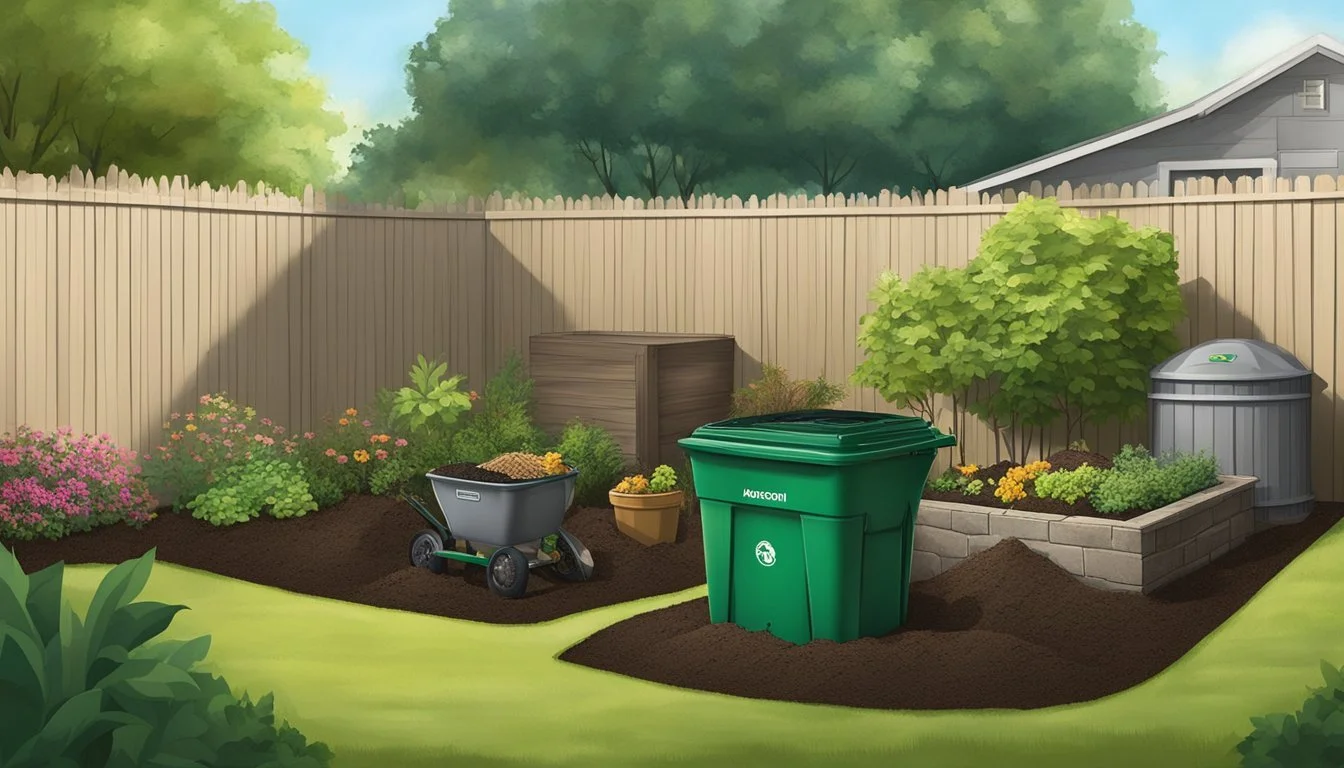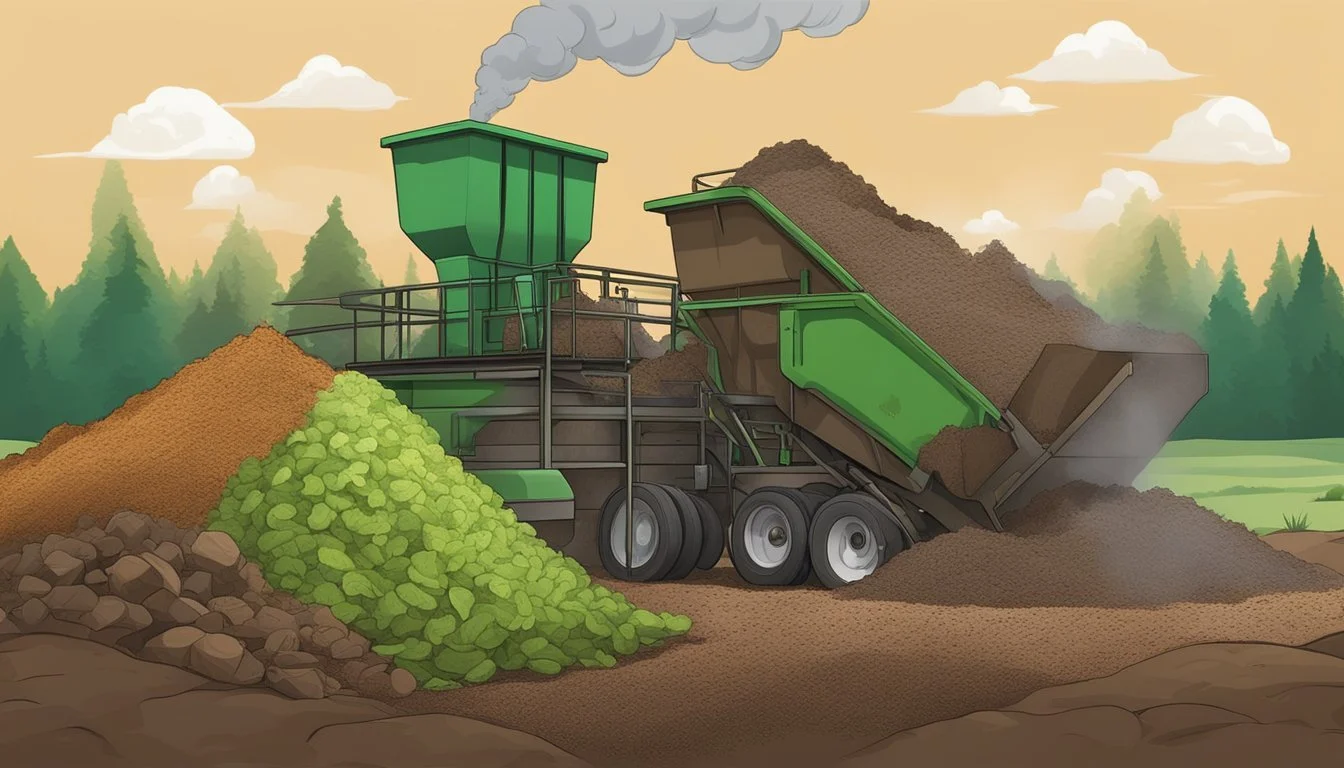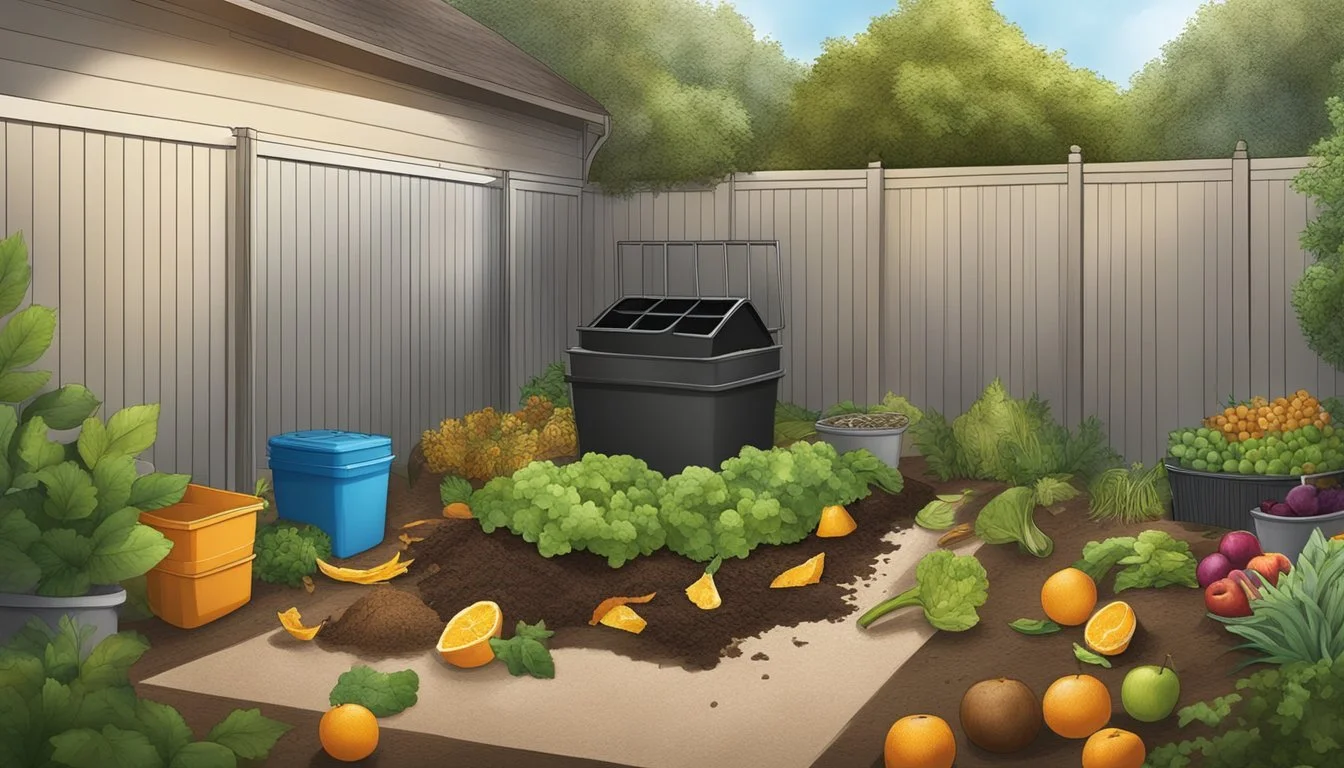Guide to Composting in Carrollton, TX
Essential Tips for Beginners
Composting is an effective way for residents of Carrollton, TX to contribute to a more sustainable environment. By turning kitchen scraps and yard waste into a valuable soil amendment, they can reduce their impact on landfills while enriching their gardens. The city's warm climate facilitates the breakdown of organic material, making it an ideal location for year-round composting. Individuals interested in this eco-friendly practice can participate through local initiatives or create their own composting systems at home.
The process of composting is simple and requires minimal investment, yet the environmental benefits are significant. Carrollton residents who engage in composting help recycle organic materials that would otherwise contribute to methane emissions at landfill sites. This practice not only reduces waste but also lessens the demand for chemical fertilizers by providing nutrient-rich compost that bolsters soil health and plant growth.
Local organizations and city programs are available to support Carrollton citizens eager to start composting. They provide valuable resources and guides on how to effectively manage a compost pile, emphasizing the variety of materials that can be composted, such as fruit scraps, vegetable waste, dry leaves, and even cardboard. These facilitated efforts ensure that interested individuals have the requisite knowledge to maintain their compost and reap the full environmental rewards of their efforts.
Benefits of Composting
Composting provides a wealth of advantages for soil quality, environmental health, and waste management efforts in Carrollton, TX.
Soil Health and Plant Growth
Composting enhances the soil's nutrient content and structure, leading to healthier plant growth. It introduces beneficial microorganisms and a diverse array of essential nutrients into the soil, creating a nutrient-rich foundation for gardens. The result is a natural fertilizer that encourages robust plant growth without the reliance on synthetic alternatives.
Reducing Environmental Impact
Incorporating composting practices helps in reducing the carbon footprint by diverting organic matter from landfills. When organic waste decomposes anaerobically in landfills, it releases methane, a potent greenhouse gas. By composting, this organic matter is broken down aerobically, significantly reducing methane emissions and therefore lessening local and global environmental impact.
Waste Reduction and Recycling
Composting plays a crucial role in waste reduction efforts by recycling kitchen scraps and yard waste back into the ecosystem. It substantially reduces the volume of waste that would otherwise contribute to the growing problem of landfill overuse. The transformation of organic waste into a valuable resource epitomizes efficient recycling processes, helping to maintain a reduce, reuse, recycle ethic within the community.
Setting Up Your Composting System
Setting up a composting system in Carrollton, TX, involves selecting an appropriate container or spot for your compost, finding the right location for placement, and considering space-saving solutions for smaller living situations.
Choosing a Compost Bin or Pile
One of the first steps in composting is to decide whether to use a compost bin or a simple compost pile. Compost bins are ideal for keeping the materials contained and can vary from a simple plastic tumbler to a more sophisticated multi-tier system. Tumblers are particularly efficient for turning organic material, speeding up the decomposition process. Alternatively, one may start a compost pile in a designated area of their yard, which will require manual turning but doesn't necessitate an initial investment in a container.
Location and Setup
The location of your compost is crucial. It should be placed in a convenient yet discrete spot in the yard with good drainage and partial sun. The area should be flat to prevent compost runoff and accessible for adding materials and removal of finished compost. The setup process is straightforward: layer your organic material, alternating between carbon-rich materials like leaves and paper, and nitrogen-rich waste such as kitchen scraps and yard clippings. Ensuring the proper balance of these materials is key to efficient decomposition.
Composting for Small Spaces
For those in apartments or with limited outdoor space, vermicomposting or bokashi might be the answer. Vermicomposting involves using worms to digest organic material in a contained system. It is an odorless process and perfect for small spaces. If services are available, one may also opt to use a composting service that collects organic waste for composting offsite.
Composting Materials
Composting is an effective method to turn various organic materials into a nutrient-rich soil amendment. Knowing what to compost is crucial for a successful composting process.
Greens and Browns
Greens: These materials are rich in nitrogen and help to speed up the composting process. In Carrollton, residents can include:
Fruit and vegetable scraps, such as banana peels and apple cores
Coffee grounds, which contribute nitrogen and a slight acidity beneficial for certain plants
Fresh grass clippings, adding green matter to the pile
Browns: These are carbon-rich and provide the necessary energy for the composting microbes. Suitable browns consist of:
Dry leaves, which are abundant and easy to gather
Cardboard and paper, shredded to improve breakdown
Small twigs and branches, better if broken into smaller pieces
Items to Include
One can utilize various household items to create a balanced compost mix. Essential items for composting include:
Kitchen scraps like vegetable peels and fruit remains
Paper products, such as napkins and paper towels (non-bleached and unprinted)
Cardboard egg cartons and toilet paper rolls, ideally torn into small pieces
Materials to Avoid
While most organic matter breaks down, certain items should be excluded from your compost to avoid pests and odors. These include:
Meat and dairy products, which can attract animals and lead to unpleasant smells
Treated or painted wood which may contain harmful chemicals
Bones and fat, as they decompose slowly and attract pests
Each item contributes either nitrogen or carbon, essential for the microbes to thrive and break down the pile into usable compost.
Maintaining Your Compost
Maintaining a compost pile in Carrollton, Texas, ensures the efficient decomposition of organic materials into nutrient-rich soil. Key tasks include proper moisture and aeration balance, odor and pest management, and regular turning of the compost.
Balancing Moisture and Aeration
The compost pile should have the consistency of a damp sponge. Too much water can suffocate the microorganisms, while too little can halt their activity. Aeration is equally important as it provides oxygen that is crucial for aerobic decomposition. This can be achieved by introducing air to the pile through holes or pipes, maintaining a balance between green nitrogen-rich materials, like vegetable scraps, and brown carbon-rich materials, such as dry leaves and branches.
Managing Odor and Pests
Unpleasant odors usually signify an imbalance, often due to an excess of wet organic materials. Addressing this involves adjusting the ratio of green and brown materials and ensuring proper aeration. Keeping a layer of brown material on top can help mask odors and deter pests. As for pests, a well-maintained pile will generally discourage their presence, but care should be taken to avoid adding meat or dairy products that can attract unwanted animals.
Turning the Compost
Regularly turning the pile is crucial for dispersing moisture, blending organic materials, and introducing oxygen throughout the pile. This can expedite the decomposition process and prevent the development of odors or mold. The frequency of turning depends on the pile's temperature and seasonal changes, but a general guideline is to turn the compost pile every 1-2 weeks. Using a garden fork or a compost aerator for this task helps distribute air and moisture evenly, promoting the production of rich compost while also discouraging pests by disrupting any potential nesting areas.
Optimizing Compost Quality
Optimal compost quality enriches garden soil and supports plant growth by providing a balance of nutrients and beneficial microorganisms. This process depends on proper monitoring and maintenance of temperature, composition, and nutrient content.
Monitoring Temperature and Composition
The success of the composting process is greatly influenced by maintaining the correct temperature and material composition. An ideal temperature range for composting is between 135-160°F, as it supports the rapid breakdown of organic matter while killing most weed seeds and pathogens. Compost bins should be turned regularly to evenly distribute heat and oxygen, with temperature monitored using a compost thermometer. The composition should be a balanced mix of 'greens,' which provide nitrogen, and 'browns,' which supply carbon. This balance keeps microorganisms active and the composting process efficient.
Optimal Temperature Range: 135-160°F
Key Components:
Greens (Nitrogen-rich materials): fruit scraps, vegetable peelings, coffee grounds
Browns (Carbon-rich materials): dry leaves, straw, cardboard
Achieving the Right Nutrient Balance
For compost to benefit garden and potting soil, it must have the right nutrient balance. An ideal compost will supply a diverse array of nutrients to meet plant needs. Include a variety of organic materials, as different types provide different nutrients. Limit materials that can lead to imbalances or that might harm plants, such as diseased plants or inorganic matter. Introducing soil to the compost pile can also introduce beneficial microorganisms that help in breaking down the materials and enriching the compost.
Nutrient-rich Additions: Seaweed, eggshells, manure
Microorganism Boosters: Garden soil
Harvesting and Using Compost
Once compost reaches a dark, crumbly state with an earthy smell, it is considered finished compost and ready to use. This process typically takes three to six months. To harvest, simply move aside any uncomposted materials to get to the compost at the bottom of the pile. The finished compost should be mixed into garden soil or used as a component in potting soil. This provides an influx of nutrients and beneficial microorganisms to the soil, making it more fertile and enhancing plant growth.
Finished Compost Indicators:
Dark, crumbly texture
Earthy smell
Composting in Carrollton, TX
Carrollton, Texas, residents have access to various composting resources and programs that align with local environmental efforts to reduce waste and conserve natural resources. These services are tailored to the unique climate and regulations of the area, providing a comprehensive composting strategy for the community.
Local Guidelines and Resources
The City of Carrollton outlines specific local regulations for composting, aiming to support residents in correctly handling organic waste. Resources such as the "Composting at Home" guide by Keep Carroll Beautiful offer valuable advice on how to start and maintain a composting system using yard and kitchen waste. This information is crucial for individuals who wish to contribute to the city's waste reduction and recycling service initiatives.
Yard Waste Collection: Carrollton provides a yard waste collection service that fits neatly into the city's composting approach.
Do's and Don'ts: Residents are encouraged to follow guidelines on what can and cannot be composted, including appropriate green and brown materials.
Community Composting Programs
Several community composting programs are available to Carrollton residents, providing options for those who may not have the space or resources to compost at home.
Drop-off Locations: Places such as Horizon Unitarian Universalist Church in Carrollton have established drop-off points for community members to contribute organic waste to a larger composting effort.
Education: Programs often include educational aspects to inform the public about the benefits of composting.
Composting in Different Seasons
The varying climate conditions in Carrollton, TX, mean that composting practices may need to adjust according to the season.
Hot summers: During the warm months, compost piles may dry out faster and require more frequent watering.
Mild winters: The colder parts of the year can slow decomposition; thus, insulation methods can help maintain composting activity.
By following local guidelines, participating in community programs, and adapting to seasonal climate changes, Carrollton residents can effectively contribute to the city's sustainability and waste reduction goals.
Common Composting Challenges
Composting in Carrollton, TX, is a beneficial practice for waste reduction and soil enrichment, but residents may face a few challenges. Understanding these can lead to a more successful composting experience.
Troubleshooting Compost Problems
When compost piles do not decompose effectively, it could be due to improper balance between nitrogen and carbon-rich materials, leading to odors or a pile that is too wet or soggy. Ensuring that you maintain the right mix and turn your pile regularly can mitigate these issues. Compost that is too dry may not break down adequately; this can be resolved by adding moist materials or water to the pile.
Dealing With Difficult Materials
Certain materials like meat, dairy, and oily foods can attract pests and create foul odors, making them challenging to compost. In Carrollton, it is recommended to exclude these items from your compost bin to avoid attracting animals and to prevent the spread of diseases. In addition, incorporating a variety of greens and browns helps create an environment conducive to decomposing without pests.
Engaging the Community
Getting the community involved in composting can lead to widespread environmental benefits. Local businesses can contribute by providing compostable waste while residents can volunteer in maintaining community composting efforts. By fostering community involvement, Carrollton can collectively reduce landfill waste, lower greenhouse gas emissions, and create rich soil for gardens and landscaping projects.
Advanced Composting Techniques
Exploring advanced composting techniques can greatly enhance the soil fertility and plant growth in Carrollton, TX. Residents can adopt methods such as vermicomposting, brewing compost tea, and using innovative approaches to manage organic waste more effectively.
Vermicomposting and Its Benefits
Vermicomposting is the process of using earthworms to convert organic waste into nutrient-rich compost. It is particularly effective because these worms can consume half their body weight in waste each day. Vermicomposting transforms kitchen scraps into beneficial soil amendments, which can lead to more robust plant harvests. The resulting compost contains increased levels of micronutrients and a structure that promotes root growth and soil aeration.
To start, one needs an appropriate compost bin that maintains moisture and temperature levels conducive to worm activity. Regularly adding food scraps and managing the bin will ensure successful vermicomposting, resulting in high-quality mulch for the garden.
Making and Using Compost Tea
Compost tea is a liquid fertilizer created by steeping finished compost in water. This "liquid gold" for plants encourages beneficial microbial activity in the soil, leading to a thriving garden ecosystem. Brewing compost tea is an advanced technique requiring certain equipment and attentiveness to maintain the correct balance of nutrients and avoid harmful bacteria growth.
To make compost tea, one places finished compost in a porous bag or container and steeps it in water, aerating it continuously to support oxygen-loving microbes. Once brewed, the compost tea can be applied to plant leaves or soil, providing a quick nutrient boost.
Innovative Composting Methods
Innovative composting methods are emerging to adapt to different environments and preferences. Some gardeners opt to directly incorporate materials into their garden beds in what's known as "sheet composting," which involves layering leaves, grass clippings, and other organic matter on the soil surface. This matter slowly decomposes and enriches the soil over time, making a ready bed for spring planting.
Other innovative methods include tumbling compost bins that make it easier to aerate the compost, reducing the need for manual turning. Some modern approaches also emphasize composting throughout all seasons, including strategies for both summer and winter composting, ensuring a continuous supply of compost for various garden applications.









